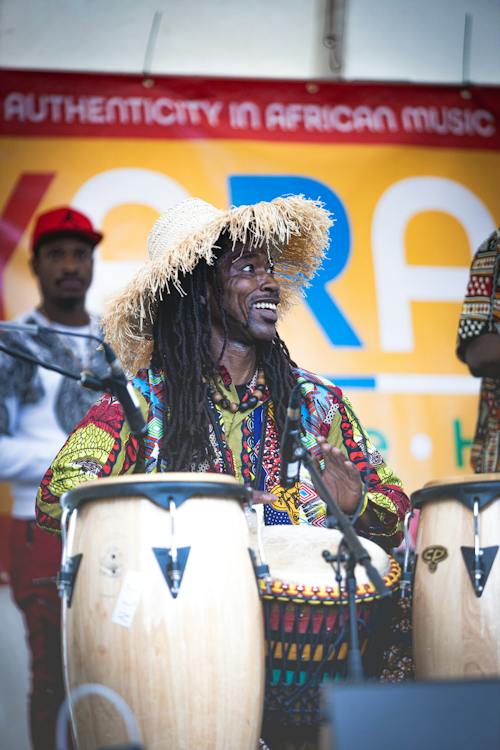The conga drum is a percussion instrument that originated from Africa. Its exact origin is unknown, but researchers agree that the conga was developed by Cuban people in the late 19th century or early 20th century.It is a single-headed drum that became famous after they were included in Cuban music. Traditional conga drums are made out of wood, barrels, or tree trunks. However, modern conga drums can be made of woods like oak or ash. Some can also be made of fiberglass, which can produce several different harmonic sounds and has better durability than those that are made of wood. Its drumhead can be made from the skins of cow, goat, and even synthetic materials.
This tall and narrow drum gained attention in the 1930s after Latin music combined with Cuban, and New York jazz music became popular in the United States. The term conga then became widely used since then. Because of its versatility, it doesn’t take long for people to recognize this instrument. Most commonly, the conga is played in pairs. However, it is unusual for the conga drums to be played in any configuration or to be paired with other percussions like the guiro and other drums like the bongos.
In the following years, specifically in the 1950s, the conga was played in sets of two or four, with an exception for the traditional conga and rumba. Typical congas have a size of 75 centimeters or 30 inches from the bottom of its shell up to its drum head. Despite its size, it can be played while seated or standing. If the conga is to play while standing, it is usually mounted on a rack or stand.
Typically, the conga is seen as three different drums; the conga, the tumbadora, and the Quinto. The tumbadoras are the lowest-pitched of the congas. It produces a bass tone that may be the most notable sound of all the conga sounds. The size of the tumbadora, or also known as rebajador, can be as large as 35.5 centimeters or 14 inches across. Meanwhile, the Quinto is the smaller-sized conga that can mimic higher notes that can play an emotional and melodious rhythm, as well as mid-range pitches. It is typically around 11.5 inches to 12 inches across.Aside from that, it can also complement the lower tones of the tumbadora.
This African drum can also be attached to drum stands while the performer hits the drum head and its rim using his hand. But notably, in some places like Trinidadian calypso and soca music, the conga was played differently. In contrast to Cuban and Latin America’s way of playing, the Trinidadian prefers to strike it with mallets. Some also choose to use both of the techniques using a mallet and bare hand.
Since the conga is a percussive instrument, it does not really have to be tuned to any particular note. However, when playing with harmonic instruments, they may be sometimes tuned into specific notes. With that, the conga is adjusted using an open tone. Generally, the particular note depends on the model and size of the conga drum. Tuning the drum is necessary so that the bass tone resonates and pierce through the musical mix. If the tuning were too loose, the bass of the conga would sound too flabby. In addition to that, if the tuning was too tight, the sound will come out unnatural. Usually, single drums are easier to tune into the player’s desired tune. But in a drum set, the congueros must make sure to reach a uniform desire pitch for each drum. In checking the tune, place one finger pad at the center of the drum head. After that, the pad should be tap near the edge above each lug in order to detect change.
It is also essential to consider the head tension, which can significantly impact how easy or not to use the drum. Being said, looser drum heads tend to lead to a hand injury, more than the tighter one. If the drum head were loose, there would be less rebound and more muffling effect. With that, the player’s joints and bones under the spirited playing may be bruised. Additionally, it can be strapped to the congueros or player’s shoulder. This allows portability and movement of the performer on stage, parades, or public events.

